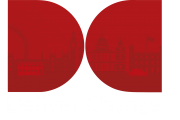Key techniques to reduce air pollution
Urban Traffic Management Control (UTMC)
Is a computerised systems being used throughout the UK and globally to improve the flow of traffic in towns and cities. They are designed to link communications between various components of traffic management, such as traffic signal control, air quality monitoring, car park management and bus priority. Where these systems are optimised, congestion has improved
Road space rationing (also known as alternate-day travel, driving restriction, no-drive days)
Is a travel demand management strategy aimed to reduce urban air pollution or peak urban travel demand in excess of available supply or road capacity, through artificially restricting accessibility to the roads, especially during the peak periods or during peak pollution events. This objective is achieved by restricting traffic access into an urban cordon area, city centre, or district based upon the last digits of the license number on pre-established days and during certain periods, usually, the peak hours.
Congestion pricing
Transport economists consider road space rationing a variation of road pricing, and an alternative to congestion pricing, but road space rationing is considered more equitable by some, as the restrictions force all drivers to reduce auto travel, while congestion pricing restrains less those who can afford paying the congestion charge. Nevertheless, high-income users can often avoid the restrictions by owning a second car. Moreover, congestion pricing (unlike rationing) acts “to allocate a scarce resource to its most valuable use, as evinced by users’ willingness to pay for the resource”. While some “opponents of congestion pricing fear that tolled roads will be used only by people with high income. But preliminary evidence suggests that the new toll lanes in California are used by people of all income groups. The ability to get somewhere fast and reliably is valued in a variety of circumstances. Not everyone will need or want to incur a toll on a daily basis, but on occasions when getting somewhere quickly is necessary, the option of paying to save time is valuable to people at all income levels.”
Mobility rights or congestion credits
A more recent idea for automobile travel restrictions, proposed by some transport economists to avoid inequality and revenue allocation issues, is to implement a rationing of peak period travel but through revenue-neutral credit-based congestion pricing. This concept is similar to the existing system of emissions trading of carbon credits, proposed by the Kyoto Protocol to curb greenhouse emissions. Metropolitan area or city residents, or the taxpayers, will have the option to use the local government-issued mobility rights or congestion credits for themselves, or to trade or sell them to anyone willing to continue traveling by automobile beyond the personal quota. This trading system will allow direct benefits to be accrued by those users shifting to public transportation or by those reducing their peak-hour travel rather than the government.
Low Emission Zone or Ultra Low Emission Zone (LEZ or ULEZ)
Is an area within which all cars, motorcycles, vans, minibuses, buses, coaches and heavy goods vehicles (HGVs) will need to meet exhaust emission standards or pay a daily charge to travel (can be combined with techniques discussed above).
Transport solutions
Take public transport or carpool
A good solution for longer journeys may be public transport or carpooling, since more people can be transported in a single vehicle. If a car is chosen rather than the train or bus, for instance, it will generate several times more ozone pollution and up to 30 times more CO2 emissions.
Walk or use the bike
45% of the ozone precursors and 38% of the particulate matter emitted in Europe comes from transport. On average, one out of three journeys we do by car is only to go as far as 2 km. Replacing a car ride by walking or using the bicycle not only helps reduce traffic but also emissions.
If you have to use your car…
- Ensure correct tyre pressure – if the pressure is down by 0.5 bars, the car needs 5% more fuel and also gives off more pollution
- Driving with the air conditioner turned on increases fuel consumption by 30%; driving with windows open only increases it by 5%
- Letting a car warm up while stationary can make it consume up to 50% more fuel – stop idling vehicles
- Using a roof rack on a car can increase fuel consumption by 20 to 30%. Bicycles are better attached to the back of the car.
- When buying a car, be careful to check its fuel economy. An environment-friendly car will use less fuel and produce less exhaust fumes. Economic incentives can be used to encourage this decision.
Heating, electricity and home solutions
In the UK and London – one of the key sources of air pollution is domestic and commercial heating, therefore reducing heating and electricity consumption will also help reduce pollution levels. Some behavioural changes could include:
- Conserve energy – remember to turn off lights, computers, and electric appliances when not in use.
- Use energy efficient light bulbs and appliances.
- Run dishwashers and clothes washers only when full.
- Choose environmentally friendly cleaners.
- Use water-based or solvent free paints whenever possible and buy products that say “low VOC”.
- Seal containers of household cleaners, workshop chemicals and solvents, and garden chemicals to prevent volatile organic compounds from evaporating into the air.


No Comments
Sorry, the comment form is closed at this time.